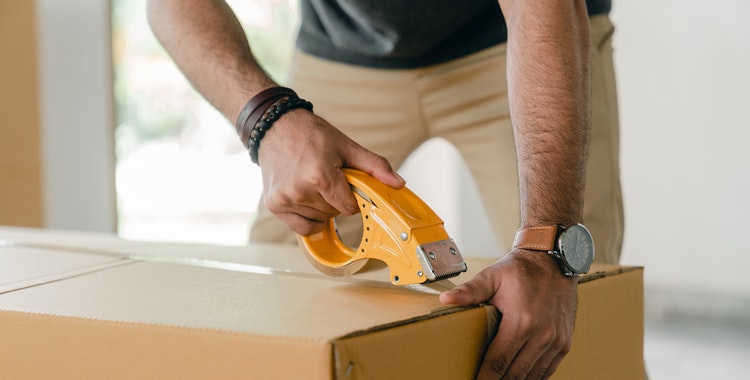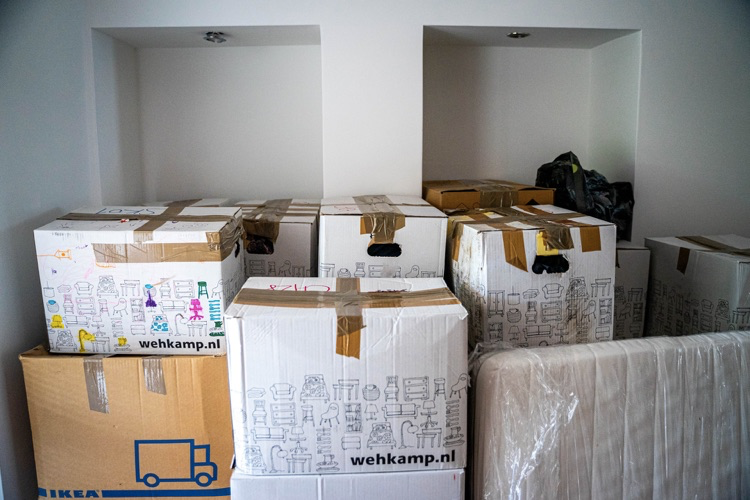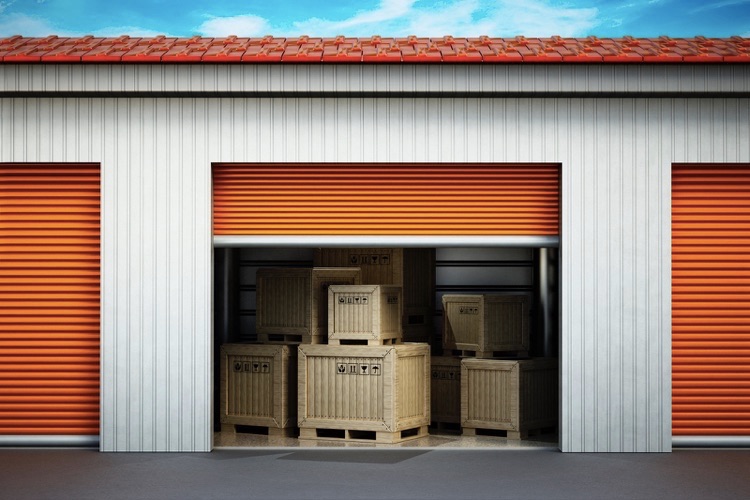How to store books correctly
Books are highly sentimental items. If you love reading, then your book collection is likely one of the most treasured things in your house. But if you start to gather too many books, or need to move them into storage for any reason, you want to make sure that your books are safely packed away.
Books are incredibly sensitive, and the wrong storage process will quickly result in long-lasting damage to your precious collection. Here are 9 tips and best practices for book storage to make sure you keep your books in perfect condition.
Dust the books
The first thing you need to do before storing books for the long term is to carefully dust off each one. Not only outside, try to shake out the pages and make sure there are no crumbs or bits of dirt hidden inside the book.
If there are specks of dust or food particles left behind, this can quickly result in mould and mildew forming in your books. This mould could spread across your entire collection and cause lasting damage to your books. So don’t pack anything away until your books are properly dusted off.
Cover your books
To help prevent any additional dust or dirt from damaging your books, it’s a good idea to wrap each book up individually. You can do this with paper towels, newspaper, or any other similar material. This just adds an extra layer of protection against dust and dirt, which will help to keep each book in perfect condition over the long run.

Always keep books in their sleeves
Just in case you haven’t already realised, never remove the sleeves from your books while you store them. These sleeves are designed to protect the sensitive pages beneath, and they will be a big help to shelter the book from dust, dirt, mould, pests, or any other possible dangers.
Use the right storage container
When you pack away your precious book collection, you want to make sure that they are properly protected. This means you will need to store them in a suitable storage container.
You could use a cardboard box, but this wouldn’t be ideal. Cardboard boxes don’t offer any protection against things like water damage. If there is some kind of flooding in your storage unit, this could be fatal for your books. Pests could also get through cardboard boxes to nibble at the pages of your books. Even mould and mildew could seep into the boxes.
Although they’re more expensive, plastic storage containers are the best option. They offer complete protection for your books against things like moisture or pests. You can easily stack plastic storage containers on top of each other, and seal them off with airtight lids. Try to get containers with flat sides to make it easier to stack your books away.

Stack the books correctly
When you pack your books into the storage container, the best approach is to stack them vertically. Place the back of the books down with the paper edges facing up. Doing this will help you maintain the shape of each book by allowing each one to gently support each other.
Never squeeze too many books into one container, or force any pressure on them. This could warp the spines of the books and cause long-lasting damage.
If you place your books flat and stack them on top of each other, make sure that you place the heaviest books at the bottom and the lightest on top.
Store books at the right humidity level
Humidity is a bad thing for book storage. If your storage unit is too humid, the damp can quickly damage the delicate pages of your books. Humidity can lead to the growth of mould, which will spread across all of your books.
However, if the relative humidity is too low, this can also be a bad thing. A storage unit that is too dry could cause your books to become brittle, with pages that easily break. A 50% relative humidity level is ideal for long term book storage.
Store books at the right temperature
The temperature that you store your books will also have a big impact. Rather store your books in colder temperatures than warmer ones. This is because lower temperatures make it more difficult for mould or pests to live around your books. If the temperature is too hot, or if it fluctuates a lot, there is more chance your books will get damaged.
The ideal temperature for book storage is around 23°C. Consider using a climate-controlled storage unit for best results. This will maintain a steady temperature at all times.

Protect the books from pests
It’s not only dust and mould that could damage your books. The last thing you want is to open up your box of books, only to find their pages have been eaten by pests. Keeping your books in secure plastic containers should prevent pests, but you can always take additional steps to make sure no unwanted visitors get into your books.
One solution is to sprinkle pepper around your book container. Don’t get any pepper on your books, just sprinkle it around the outside of your storage boxes. You could also use cotton balls soaked in mint to deter pests.
Keep the books away from sunlight
Direct exposure to UV rays will cause long-lasting damage to the pages of your books. Always keep your books away from direct sunlight when you put them into storage. Never store books next to windows or anywhere where the sunlight comes through. If you do store them in a light area, then try to keep them in a box that won’t let any sunlight in.
Conclusion
It’s very easy to get book storage wrong, which can have a devastating effect on your prized collection of books. Follow the steps above, and you will be able to store your books in perfect condition. These steps don’t require much effort, and they will make a big difference to the long-term storage of your books.


